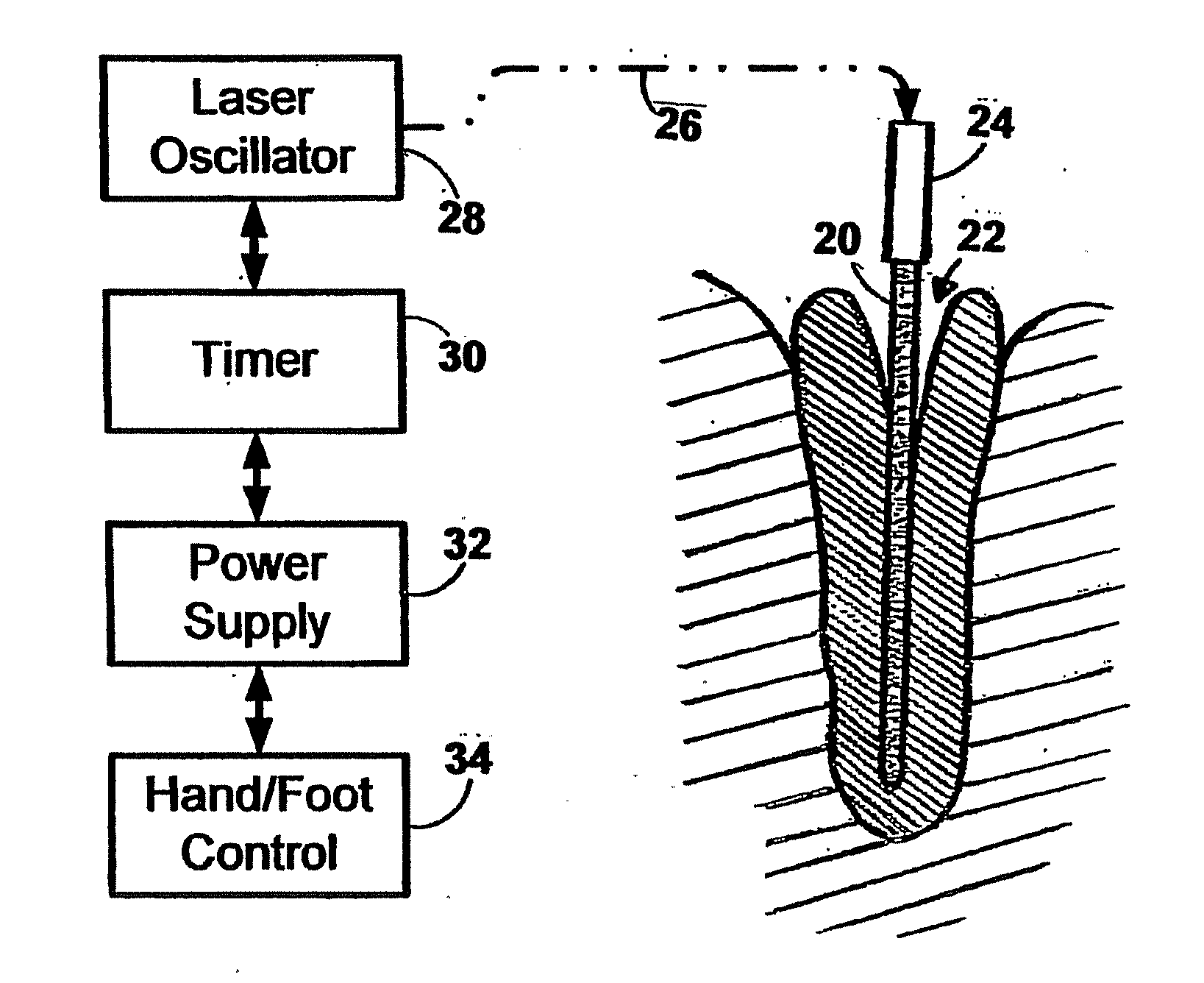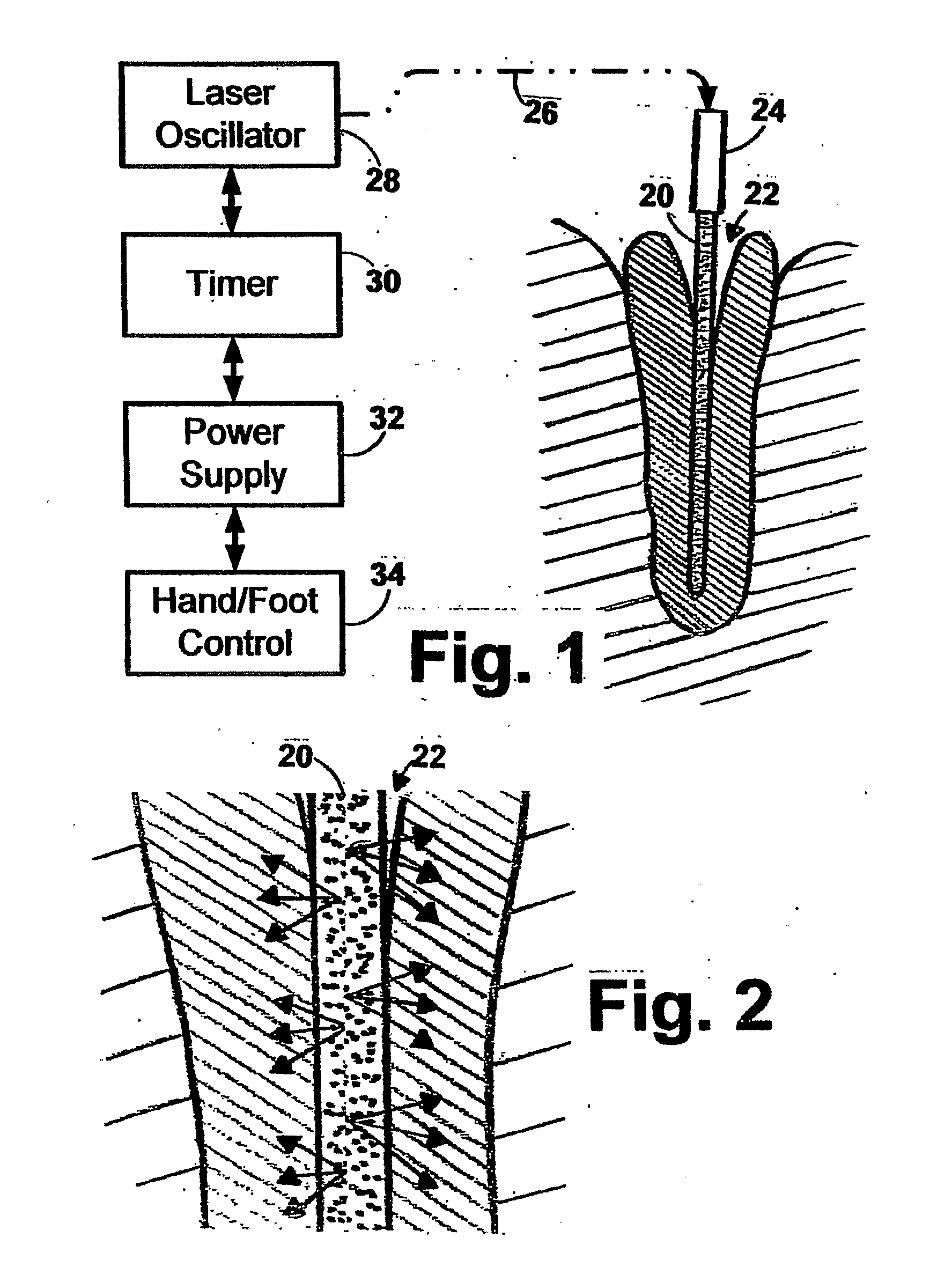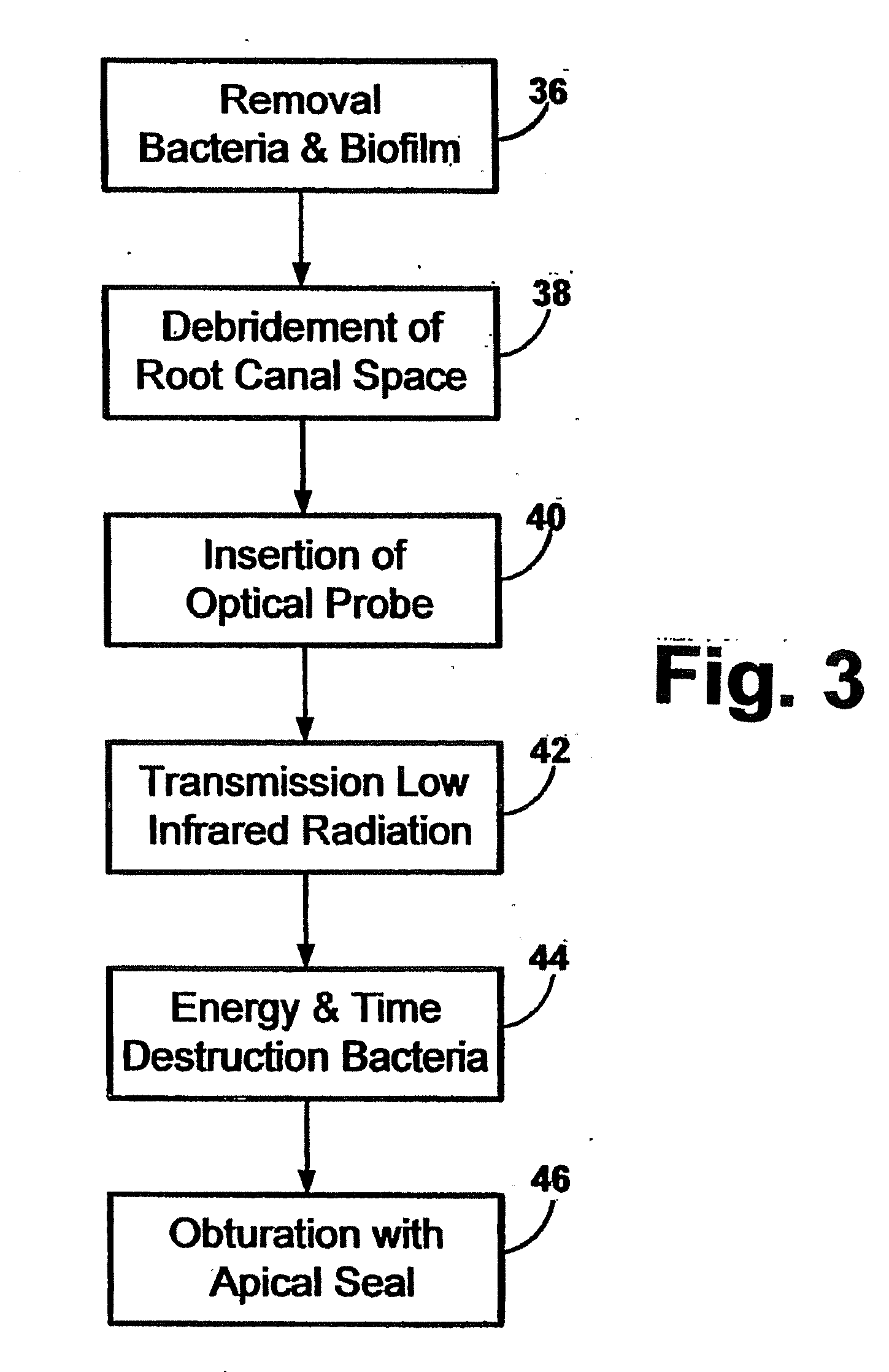Instrument for Delivery of Optical Energy to the Dental Root Canal System for Hidden Bacterial and Live Biofilm Thermolysis
a technology of optical energy and root canal system, which is applied in the direction of teeth capping, teeth nerve/root treatment implement, etc., can solve the problems of slow ablation rate of mid-infrared laser, limited acceptance of laser use for endodontic therapy, and inability to deliver optical energy in a single direction, etc., to achieve long treatment time, low infrared energy, and low energy consumption
- Summary
- Abstract
- Description
- Claims
- Application Information
AI Technical Summary
Benefits of technology
Problems solved by technology
Method used
Image
Examples
Embodiment Construction
[0010]Current Model for Infected Root Canal Space and Apical Periodontitis
[0011]When a vital dental nerve (pulp) becomes infected with pathogenic microorganisms, it undergoes a process of irreversible pulpitis. This occurs when the local inflammatory products and tissue damage, from the bacterial infiltration, cause the dental pulp to succumb and die. This cascade then turns into a frank micro-abscess within the pulp chamber and the accompanying dental root canal three-dimensional structure. As the infection progresses, the entire soft-tissue of the dental pulp undergoes a process of liquefaction necrosis. Within the hard dental canal structure, there results a complete lack of collateral circulation and, subsequently, insufficient drainage available for the necrotic inflammatory fluids within the root canal space. The inflammatory bacteria laden fluids then escape the root canal system at the root apex, and begin to cause a massive inflammatory response at the periapex in the richl...
PUM
| Property | Measurement | Unit |
|---|---|---|
| infrared wavelength range | aaaaa | aaaaa |
| length | aaaaa | aaaaa |
| diameter | aaaaa | aaaaa |
Abstract
Description
Claims
Application Information
 Login to View More
Login to View More - R&D
- Intellectual Property
- Life Sciences
- Materials
- Tech Scout
- Unparalleled Data Quality
- Higher Quality Content
- 60% Fewer Hallucinations
Browse by: Latest US Patents, China's latest patents, Technical Efficacy Thesaurus, Application Domain, Technology Topic, Popular Technical Reports.
© 2025 PatSnap. All rights reserved.Legal|Privacy policy|Modern Slavery Act Transparency Statement|Sitemap|About US| Contact US: help@patsnap.com



